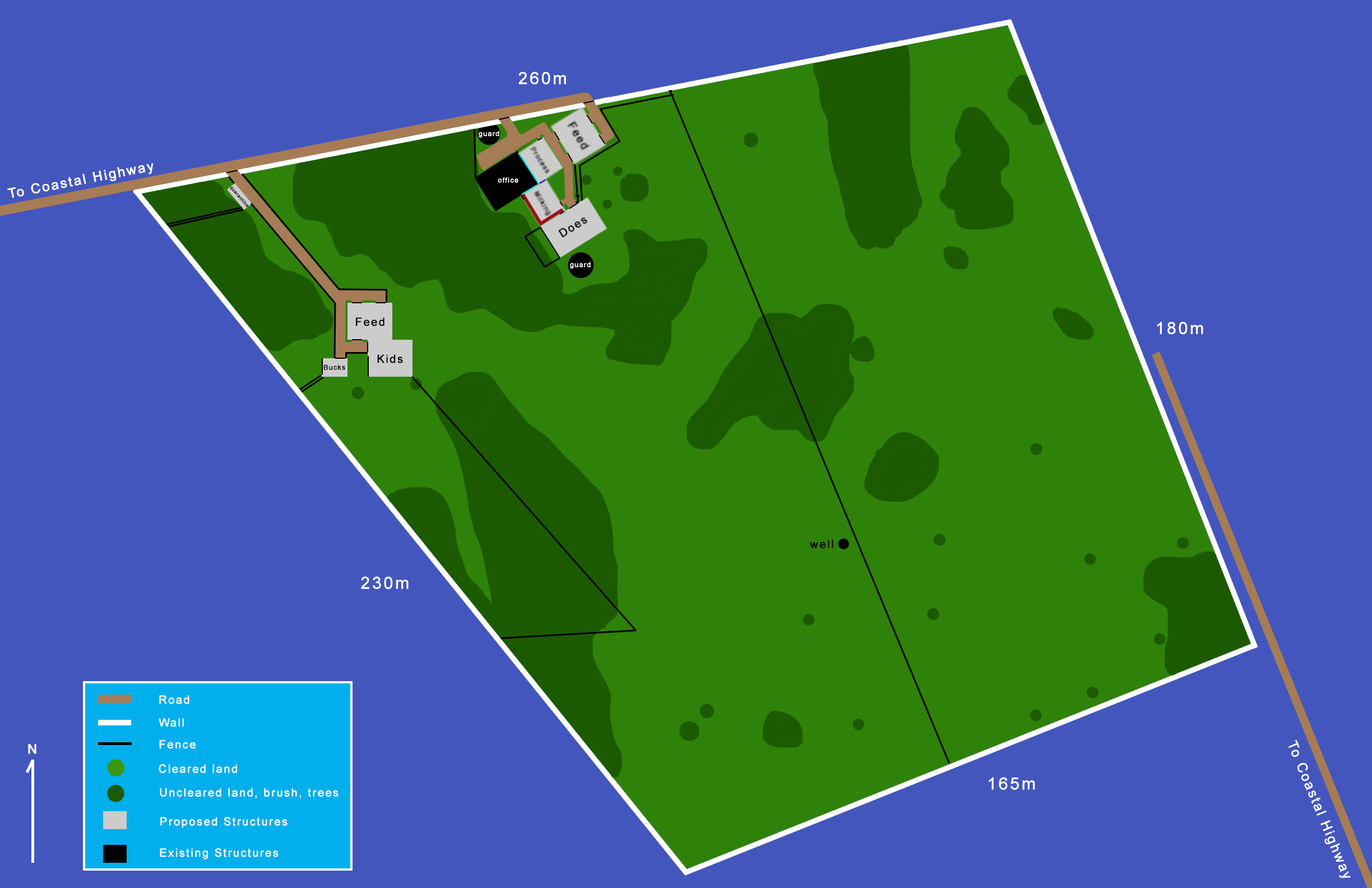The Site
Gambia Goat Dairy is located in West Africa, on the west coast of The Gambia in Sanyang Village. The farm's proximity to the industrial center and capital city of Banjul allows for easy procurement of feedstuffs and equipment, while its central location in the highly populated Kombo region aids in the logistics of product distribution. See more maps of The Gambia here.
The Goats
The West African Dwarf is The Gambia's endemic caprine breed. With powerful genetic resistance to local trypanosome infections, these robust animals are ideally suited to produce milk in the harsh environment of West Africa. Goats convert feed to milk more efficiently than cows, helping reduce costs and environmental impact of the operation.
Click here for more information on rearing livestock in The Gambia.
The Buildings
Gambia Goat Dairy's building layout was designed with the input of numerous Gambian and international small ruminant researchers and professionals. It maximizes operational efficiency while reducing disease risk on our farm. Biosecurity is prioritized as livestock are isolated from farm visitors and neighboring animals, while incoming herd members are initially segregated by a quarantine pen. Pastures are separated into distinct sectors to facilitate rotational grazing and parasite burden reduction.
Click here for a more detailed look at the GGD building layout.
The Plot
Our farm is located on 9.64 acres of land zoned for agriculture and education. This area is ideal to implement a pilot project with 50 milking does, sufficient to quantify the productivity of the West African Dwarf goat breed. The plot's proximity to the coastal highway, one of The Gambia's major motorways, plays an important role in site access and product distribution.
Find more site diagrams and land maps here.
The Land
Gambia Goat Dairy's lush pasture is full of high quality endemic forage grasses and browsing trees. This vegetation will play a key role in supporting our productive dairy herd. The land will be managed with a sustainable, semi-intensive browsing strategy that promotes farmland biodiversity and animal welfare while reducing the acreage needed to achieve high yields. This strategy minimizes environmental nitrogen loading and will be continually reassessed throughout the pilot project to ensure the success of our methods.
Click here to learn more about the environmental issues facing The Gambia.





